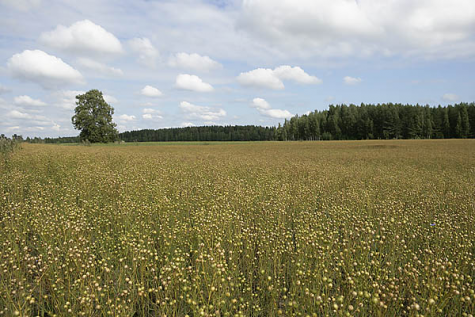Flax - a metre tall plant
Text: Kristel Vilbaste
Photo: Arne Ader
Translation: Liis
Flax Lina Linum usitatissimum
Shrove Tuesday is a good time to remind of the flax plant. Many children in Estonia whose beds are becoming just a little too short hope that if you go sliding there will be nice long bed linen in a new bed.
Flax is an annual with light blue flowers; it usually grows 60-120 cm tall. Flax a metre high was a dream that was worth performing magic rites for on Shrove Tuesday, such as going together to slide. The longer flax stems, the longer line fibres.
Flax was pulled up by hand. The pulled-out flax stems were tied into sheaves (beets) and arranged in stacks in the fields. From there the dry flax sheaves beets were collected, the seed pods were removed (rippling), and the sheaves were set to soak or steep (rett). There were flax steeping ponds for this, with some logs on the bottom. The flax sheaves set out on them were covered with branches or brushwood, with stones on top for weighing it down. Flax was steeped for 1-3 weeks, depending on the weather.
The flax that was taken out from the steeping or retting was spread evenly on a stubble field or hayfield to drain and to soak some more in the dew. From there the flax was brought to dry on the threshing room beams. The dry flax sheaves were stored in the threshing room. When the autumn field work was done they were threshed (scutched and hackled), that is, the straw was crushed and broken away from the fibres. The straw was crushed and separated from the fibres with a scutching knife (wooden mallet or blade). Any remaining straw, tow, was removed from the fibres with hackling combs and finally carding.
Spinning flax required great skill because the spinner had to wind and fasten the bunches of linen fibres (rovings) on to the distaff of the spinning wheel. From the yarn linen fabrics, tarpaulin, sailcloth and much more was made.









